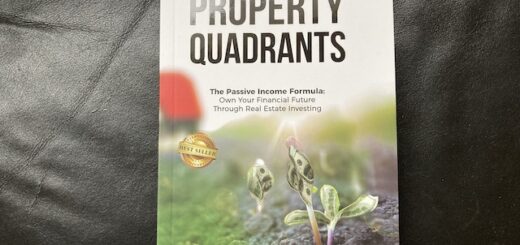8 Common Investment Strategies To Choose From
Investing has recently become more accessible for everyone, but there are still some barriers to getting personalised financial advice. So, how do you know you are making appropriate investment choices for yourself? Well, looking at different investment strategies and choosing a suitable can help with that!
What is an investment strategy and why you should have one
An investment strategy is the overall idea on how you are going to be investing and what you invest in.
It should take into account the goals you have, and why you are investing in the first place.
For example if your goal is to create passive income through dividends, you should be reviewing your investment options from that point of view.
There would be no point having most of your portfolio in growth assets that pay no dividends if your goal is to increase your dividend income.
When you have clear goals and a clear strategy, you will immediately have a less overwhelming pool of options to invest in.
A suitable investment strategy should also help you reach your goals faster.
Common investment strategies
There are many investment strategies around and these 8 that I’ll be introducing are some of the more common ones.
Fundamental analysis
Fundamental analysis approach to investments is the idea of finding the company’s intrinsic value and trying to forecast the company’s future (to a degree).
This is done by evaluating economic factors and looking at the industry the company operates in and evaluating the company itself based on publicly available information.
I wrote a more comprehensive post about this method and you can find it here.
Value investing
Value investing is closely related to fundamental analysis strategy as value investors often use fundamental analysis as a decision making tool.
While fundamental analysis will help you understand the inner workings of a company and how they operate in their wider environment (this on its own can help you make an investment decision) value investors have more specific criteria for when they make an investment decision.
Value investors aim to find undervalued shares in the market place. This is done by calculating the intrinsic value (often using fundamental analysis tools) and comparing it to the current market value.
If the intrinsic value is higher than what you can currently buy the shares for, it is said that the shares are undervalued and a great investment opportunity.
Value investors buy these at a discount and wait for them to go up to the intrinsic value.

Growth investing
Growth investing is about trying to find companies with growth opportunities and the aim is getting capital growth rather than income (dividends).
This investment strategy requires research into the company you want to invest in to fully evaluate the growth opportunities the industry it operates has and whether the company itself has what it takes.
Technical analysis
Technical analysis is often used by day traders who aim to profit from short term market movements. They aim to buy at low price and sell it not long after for a higher price.
Technical analysis is looking at price charts trying to identify price movement patterns and predict what kind of price movement comes next, then invest accordingly.
Day trading can be heavy on the tax front if where you are based has capital gains tax.
Income investing
Like the name suggests, income investing strategy aims to create regular income from well diversified investments.
This could be in the form of dividends, interest payments, maybe rent income and so forth.
When you generate income from your investments, you become financially free from having to work to make money, which is why it is attractive to many.
Buy-and-hold investing
Buy-and-hold investing is as the name says, buying investments and holding them for the long term.
It could be growth assets or investments that generate income overtime.
The main criteria behind making investment decisions for this strategy are often asking yourself would you hold the investment for a long term, despite price movements.
It is the opposite of trading and often has less tax consequences (depending where you are located) because you are not constantly triggering possible capital gains taxes.
Sustainable investing
Sustainable investing has become more and more popular and has many names, such as responsible investing or ESG investing.
The main idea is that you invest in companies who align with your values.
This can be done by screening your investment options. Generally, there are two ways of screening, negative and positive.
In negative screening an investor is actively staying away from companies whose practices don’t align with their values. Common ones are avoiding weaponry or tobacco companies.
In positive screening on the other hand an investor is looking for the good things that companies might be doing and chooses to support that by investing in them. This could be environmental initiatives or socially responsible behaviour.

Dollar-cost-averaging
Dollar-cost-averaging is the method where you regularly invest your chosen amount of money, rather than investing lump sums.
The idea is to try to stop yourself from trying to time the market when investing a large lump sum by just regularly investing over time.
This way no matter what the market is doing you will be investing, sometimes when the market is down you will get good deals and when they are up you pay more.
But by dollar-cost-averaging it all averages out over time lowering the average cost of the investments you bought.
Combining investment strategies
Now it might be fairly clear from these little introductions that rarely are two investment strategies mutually exclusive.
You don’t have to just choose one and stick to it, you can combine different approaches within your portfolio in different proportions.
Whatever suits you and helps you reach your investment goals!
For example your strategy could be that 50% of your portfolio you invest for income and 50% you invest for growth and use fundamental analysis to determine what to invest in and either use dollar-cost-averaging or save lump sums to invest less frequently.
Or the biggest portion of your portfolio is dollar-cost-averaged into some diversified low cost funds and with small portion of your portfolio you are either doing some day trading or finding opportunities for value investing.
Have you given any thought to your investment strategy? Out of these 8 which speaks to you the most?







